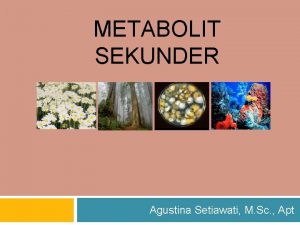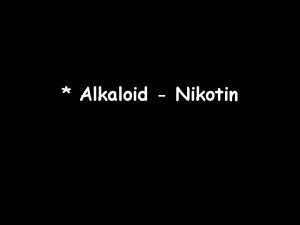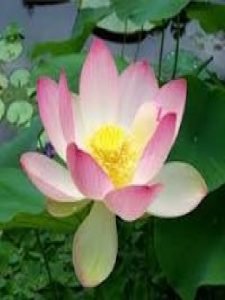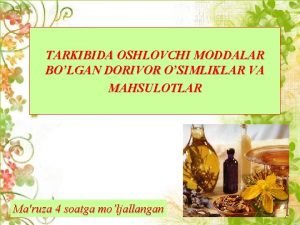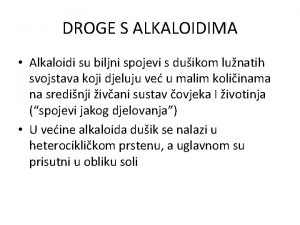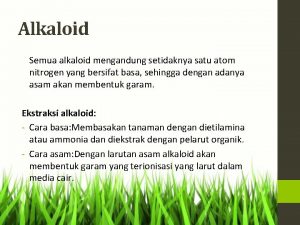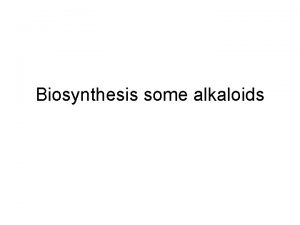ANALYSIS OF PIPERINE ALKALOID QUALTITATIVE ANALYSIS QUANTITATIVE ANALYSIS







- Slides: 7


ANALYSIS OF PIPERINE ALKALOID QUALTITATIVE ANALYSIS QUANTITATIVE ANALYSIS üBy weighting the crystals Chemical Test Chromatography Specific Test T. L. C

Chemical Test 1) The Specific Test Aim: - to indicate specifically the piperine alkaloid from other alkaloids. Equipments and reagents: ü Petri-dish ü Ethanol ü 1, 3. 5 tri nitrobenzene Procedure: 1) Take few crystals of piperine alkaloid 2) Dissolve in few mls of ethanol in a Petri-dish. 3) Add few drops of 1, 3, 5 tri nitrobenzene. Results: Red precipitate occurs with melting point 130ºC. Discussion: A complex will be formed between the piperine and 1, 3, 5 tri-nitrobenzene.

2) General Tests 1 - Mayer's Test Aim: - to indicate in general the alkaloid as other alkaloids. Equipments and reagents : ü Petri-dish ü Ethanol ü HCL ü Mayer's reagent Procedure: 1) Take few crystals of piperine alkaloid 2) Dissolve in few mls of ethanol in a Petri dish 3) Add two drops of HCL. 4) Add two drops of Mayer's reagent. Results: White precipitation will occur. 2 - Wagner's Reagent 3 -Dragendorff's Reagent

T. L. C Aim: - used to identify qualitatively the piperine alkaloids. Equipments and reagents: ü Glass jar with its cover ü Silica gel plates ü Standard reagent ü Spray reagent (dragendroffs reagent) ü Mobile phase = (acetone: water: ammonia (90: 7: 3)) ü Capillary tube

Procedure: 1) Prepare the mobile phase and put in the glass jar, cover the jar and leave it for 45 min. 2) Apply the sample and the standard by the use of capillary tube on the silica gel plate. 3) Leave the plate in the jar until the solvent reaches 3/4 of the plate. Remove the plate, dry and then spray with spraying reagent. Results: Orange spots appear for both standard and sample.

THANK YOU
